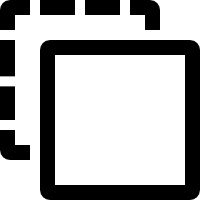|
| |
|
|
운영체제 2판 솔루션 (저자 Andrew S.Tanenbaum 2nd ed Modern Operating Systems)
( Ctrl + D )
 링크복사
링크주소가 복사 되었습니다.
링크복사
링크주소가 복사 되었습니다.원하는 곳에 붙혀넣기 하세요
( Ctrl + V )
파일  [Size :
0 Kbyte
]
[Size :
0 Kbyte
]
분량 Page
×
링크 주소가 복사되었습니다.
링크 주소가 복사되었습니다.
원하는 곳에 붙혀넣기 하세요
|
|
|
카카오 ID로 다운 받기 구글 ID로 다운 받기 페이스북 ID로 다운 받기 |
|
자료설명
목차/차례
[솔루션] 운영체제 2판(저자 Andrew S.Tanenbaum 2nd ed - Modern Operating Systems) 솔루션 입니다.
총 1장부터 12장까지의 솔루션으로 구성되어 있습니다.
공부 할 때 정말 도움이 많이 됬던 자료 입니다. 예습할때나, 복습할때나 그리고 시험기간에 특히 꼭 필요한 자료입니다..^^
총 1장부터 12장까지의 솔루션으로 구성되어 있습니다.
공부 할 때 정말 도움이 많이 됬던 자료 입니다. 예습할때나, 복습할때나 그리고 시험기간에 특히 꼭 필요한 자료입니다..^^
본문/내용
MODERN OPERATING SYSTEMS
SECOND EDITION
PROBLEM SOLUTIONS
ANDREW S. TANENBAUM
Vrije Universiteit Amsterdam, The Netherlands
PRENTICE HALL
UPPER SADDLE RIVER, NJ 07458
SOLUTIONS TO CHAPTER 1 PROBLEMS 1. An operating system must provide the users with an extended (i.e., virtual) machine, and it must manage the I/O devices and other system resources. 2. Multiprogramming is the rapid switching of the CPU between multiple processes in memory. It is commonly used to keep the CPU busy while one or more processes are doing I/O. 3. Input spooling is the technique of reading in jobs, for example, from cards, onto the disk, so that when the currently executing processes are ?nished, there will be work waiting for the CPU. Output spooling consists of ?rst copying printable ?les to disk before printing them, rather than printing directly as the output is generated. Input spooling on a personal computer is not very likely, but output spooling is. 4. The prime reason for multiprogrammi…(생략)
SECOND EDITION
PROBLEM SOLUTIONS
ANDREW S. TANENBAUM
Vrije Universiteit Amsterdam, The Netherlands
PRENTICE HALL
UPPER SADDLE RIVER, NJ 07458
SOLUTIONS TO CHAPTER 1 PROBLEMS 1. An operating system must provide the users with an extended (i.e., virtual) machine, and it must manage the I/O devices and other system resources. 2. Multiprogramming is the rapid switching of the CPU between multiple processes in memory. It is commonly used to keep the CPU busy while one or more processes are doing I/O. 3. Input spooling is the technique of reading in jobs, for example, from cards, onto the disk, so that when the currently executing processes are ?nished, there will be work waiting for the CPU. Output spooling consists of ?rst copying printable ?les to disk before printing them, rather than printing directly as the output is generated. Input spooling on a personal computer is not very likely, but output spooling is. 4. The prime reason for multiprogrammi…(생략)
추천자료
-
 지적장애아교육] 정신지체 명칭에서 지적장애 명칭으로 바뀐 것에 대해 영유아에게 미치는 영향에 대해 논하시오.
지적장애아교육] 정신지체 명칭에서 지적장애 명칭으로 바뀐 것에 대해 영유아에게 미치는 영향에 대해 논하시오.
-
 가족상담및가족치료] 가족의 기본속성과 주요가설을 설명하고 본인가족의 독특한 규범을 설명하시오.
가족상담및가족치료] 가족의 기본속성과 주요가설을 설명하고 본인가족의 독특한 규범을 설명하시오.
-
 해결중심모델의 구체적으로 사례를 선택하여 그 사례 안에서 해결중심모델의
해결중심모델의 구체적으로 사례를 선택하여 그 사례 안에서 해결중심모델의
-
 여성복지론] 여성주의 관점인 자유주의, 급진주의, 사회주의, 포스트모던 주의의 실천과정의 차이에 대해 비교하시오.
여성복지론] 여성주의 관점인 자유주의, 급진주의, 사회주의, 포스트모던 주의의 실천과정의 차이에 대해 비교하시오.
-
 자서전 나의 일대기 나의 인생 나의 삶
자서전 나의 일대기 나의 인생 나의 삶
-
 아동관찰 행동연구 일화기록법을 설명하고, 영유아 1명을 일화기록법으로 관찰하시오.
아동관찰 행동연구 일화기록법을 설명하고, 영유아 1명을 일화기록법으로 관찰하시오.
-
 수준측량
수준측량
-
 박태순 한오백년
박태순 한오백년
-
 [현실치료] 현실치료의 이론적 배경, 현실치료의 목적, 특징, 정신장애 원인 및 현실치료 사례[2012년 평가우수자료★★★★★]
[현실치료] 현실치료의 이론적 배경, 현실치료의 목적, 특징, 정신장애 원인 및 현실치료 사례[2012년 평가우수자료★★★★★]
-
 뽀롱뽀롱 뽀로로
뽀롱뽀롱 뽀로로
|
저작권정보
|
|
*위 정보 및 게시물 내용의 진실성에 대하여 회사는 보증하지 아니하며, 해당 정보 및 게시물 저작권과 기타 법적 책임은 자료 등록자에게 있습니다. 위 정보 및 게시물 내용의 불법적 이용, 무단 전재·배포는 금지되어 있습니다. 저작권침해, 명예훼손 등 분쟁요소 발견시 고객센터의 저작권침해신고 를 이용해 주시기 바랍니다.
|
| 📝 Regist Info |
|
I D : ******** Date : FileNo : 11059395 |
|
| |

| |







